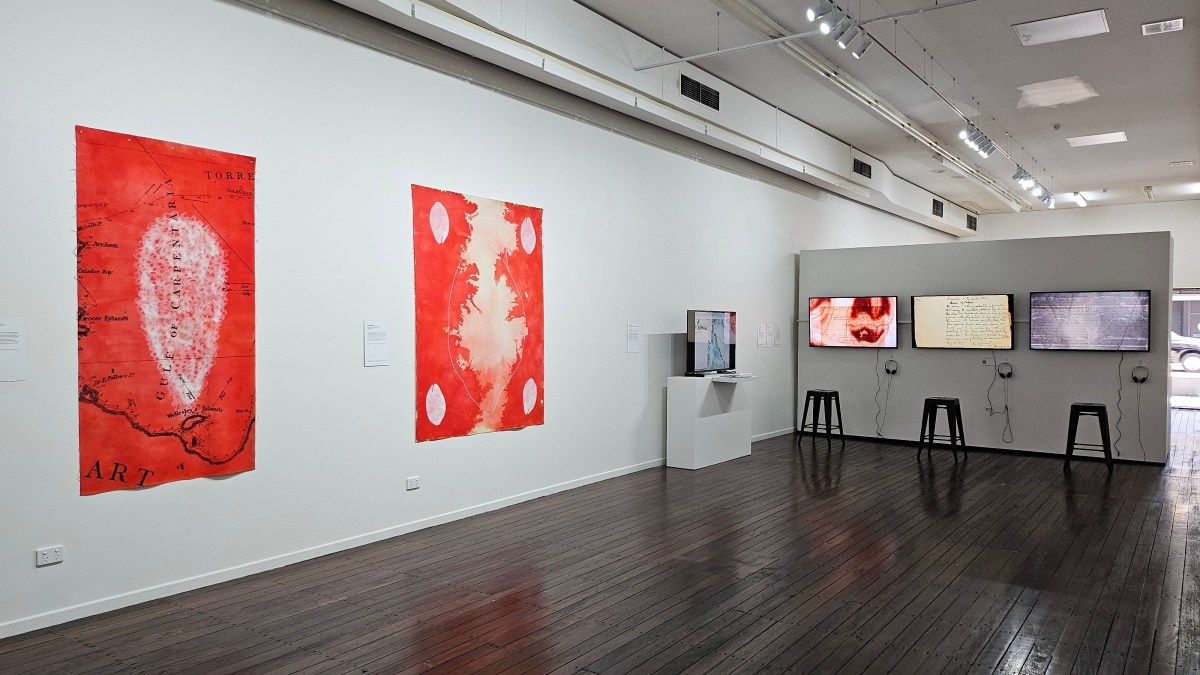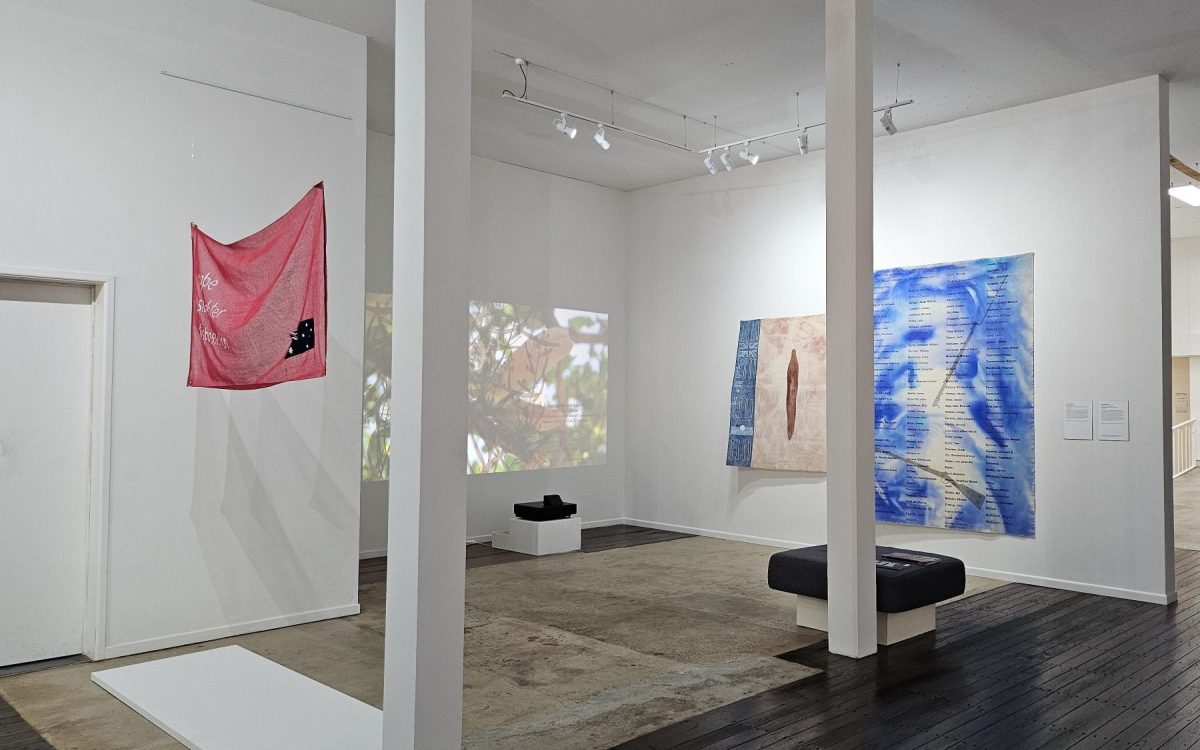Aboriginal and Torres Strait Islander readers are respectfully advised that this article contains the name of a person who has died.
skeletons by Queensland-based Waanyi artist Judy Watson uncovers a piece of twisted and haunting colonial history that continues to cast a shadow.
With a selection of new and existing video works, installations and an interactive map detailing sites of (forgotten) violence, you don’t need to dig deep to get the message.
The first work that viewers encounter upon entering Umbrella Studio Contemporary Arts – of which Watson is a founding member and long-time collaborator – features two sheer banners that intentionally form a confrontational threshold to the rest of the exhibition.
butcher’s apron series flag #1 and 2 (1994) adopts the term commonly used to refer to the Union Jack, with its intersecting lines of red symbolising bloodshed. The two ‘aprons’ each display stark white text, one of a quote from the 1994 Save Our Flag group and another of Watson’s critical response citing “rape slaughter dispossession” to remind those who would willingly turn a blind eye towards colonial violence.
Three videos, skullduggery (2021), body of evidence (2022) and shadowbone (2022) build upon each other to allow a lesser told truth to resurface, drawing material from the Queensland State Archives, which commissioned the exhibition. The pieces detail the dehumanisation of First Peoples to subjects or even objects, in the case of skullduggery.
skullduggery traces the correspondence between Matron Agnes Kerr from Burketown Hospital and curators at London’s Wellcome Historical Medical Museum as they negotiate the transportation of the skull and king plate stolen from the grave of Aboriginal man, Tiger (aka ‘King of the Mines’) in the 1930s. The skull was seen as “a very valuable addition to the collection [at Wellcome]”. It was returned by the Wellcome Collection to the National Museum in Canberra in the 2000s, but is yet to be repatriated to its community, while Tiger’s king plate remains in London.
The letters are narrated by First Nations broadcaster Daniel Browning, Goenpul actor Lafe Charlton and Queensland actor Roxanne McDonald, a descendant from the Mandandanji and Darambal tribes of Central Queensland. Together they help reclaim some of the story.
On the other hand, more could have been done in terms of reconfiguring the space to help those videos deliver a stronger impact, potentially situating them inside a ‘black box’ to allow the viewer to be surrounded with the voices. Currently they feel a bit loose in the brightly-lit gallery with other video and audio features nearby.

Watson’s connection to Country is highlighted in pieces including blood vessel with shells (2012) and a brand new commission, groundwater (2024), the latter created in collaboration with the artist’s son, Otis Carmichael. Old family photographs and new documentary footage trace changes in Country throughout the generations, underscoring a sense of urgency to protect these sites as sources of memory and knowledge.
groundwater also coincidently speaks to another Umbrella commission that currently shares the gallery space, Regardé Aqua by senior artist Rhonda Stevens. It’s a megalithic structure evoking sublimity and weight that is in fact constructed out of carved polystyrene.
skeletons is by no means a comprehensive show of Watson’s practice, but it does signal the constant thread of reclamation, criticality and connection that she has sustained throughout her career, and within this very organisation.
skeletons is on view at Umbrella Studio Contemporary Arts, Townsville until 27 October; free.
This writer travelled to Townsville as a guest of Umbrella Studio Contemporary Arts and the North Australian Festival of Arts, co-presenters of skeletons.





